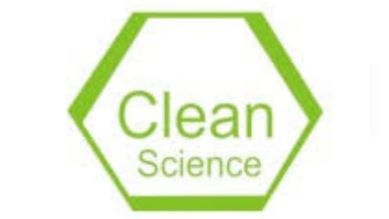Clean Science’s future growth will come from capex investment in unit-4 where it has 34 acres of land.

Clean Science & Technology’s (Clean Science) Q3FY22 gross profit margin saw a further dip to 65% (down 910bps YoY) due to high feedstock inflation and delay in implementing price hikes. However, the company took 10-25% price hike in Jan’22, which should help its margins to recover in the coming quarters.
It commenced production of two new products, PBQ and TBHQ, in Q3FY22 and will also expand its capacity by 30-50% in performance chemicals in Q4FY22; this should help drive faster revenue growth in FY23E. Company is also on track to commence two HALS series manufacturing from Q3FY23, which will add to the new product portfolio. We see new products fetching lower margins compared to the existing portfolio. Thus, margins may compress from historical levels, but higher revenue growth will ensure steady EBITDA growth.
EBITDA jumped 21.8% YoY to Rs761mn. In Q3FY22, Clean Science revenues grew 44% YoY to Rs1.8bn. This was driven by ~86% YoY revenue growth each in pharmaceutical intermediate and FMCG chemical segments, while performance chemical revenues rose 27% to Rs1.2bn. Gross profit rose only 23.5% YoY to Rs1.2bn as margin compressed to 65% (from 75.9% in Q3FY21) due to raw material inflation and delay in pass-through. Company had annual pricing contracts, which expired in Dec’21. It has initiated 10-25% increase in prices across products, and we expect this to help regain the earlier margin of 70-72%. EBITDA growth was further hampered by higher power & fuel and freight costs. Clean Science’s new price contracts are based on ex-factory, and actual freight cost will be charged to customers. Net profit grew 18.2% YoY to Rs580mn.
Two new products commercialised. Clean Science has commissioned two plants to manufacture new products – PBQ (para benzoquinone) and TBHQ. PBQ is an import substitution product used in agrochemicals and stabilisers. India imports 840tpa of PBQ (price US$20-30/kg). PBQ is a difficult product to manufacture, and the company manufactures PBQ using an innovative catalytic process. TBHQ is a stabiliser used by its customers for BHA and AP. Company will buy hydroquinone (HQ) from market to manufacture both PBQ and TBHQ. It will start with an initial capacity of 480tpa of PBQ and 1,200tpa of TBHQ. It does not have any plan to backward integrate to HQ as its by-product catechol is used for manufacturing vanillin where Clean Science has no presence. In stabilisers, it is working on another difficult product, phenothiazine (PTZ).
Company plans more capacity in next few quarters. Clean Science plans to increase its MEHQ and Guaiacol capacity by 30-40% and BHA by 50% by Mar’22. BHA saw strong volume growth of 50% YoY in Q3FY22. Though capacity utilisation is 65-70% for Clean Science in MEHQ and Guaiacol, ramp-up of BHA will need MEHQ as feedstock. Company expects the new facilities to reach utilisation of 50-60% in FY23 itself. Despite the inflationary situation, the company has managed to gain market share by providing stability in pricing – BASF has inked a 3-year contract wherein Clean Science will supply 70-75% of its requirement of performance chemical product compared to a very small market share earlier. Company also plans to commence two HALS products (701 and 770 series) by Oct’22. The 701 series is used in water purification and will cater to new customers in export markets. The 770 series is used by master batches (stabilisers) and will cater to the import substitution market. India imports 3-4ktpa of the 770 series, and the company is putting up an initial capacity of 2ktpa.
Unit-4 to take Rs3bn-5bn of total capex. Clean Science’s future growth will come from capex investment in unit-4 where it has 34 acres of land. Total capex for completely developing unit-4 would be Rs3bn-5bn with additional revenue potential of Rs9bn-15bn. Company plans 8-9 products in HALS category, and sees huge opportunity in pharmaceutical intermediates (import substitution) to be developed in this plant. It would need at least another 5-7 years to completely exhaust unit-4 land.
Subscribe to our newsletter & stay updated.